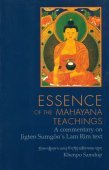Six Perfections: 1 definition
Introduction:
Six Perfections means something in Buddhism, Pali. If you want to know the exact meaning, history, etymology or English translation of this term then check out the descriptions on this page. Add your comment or reference to a book if you want to contribute to this summary article.
In Buddhism
General definition (in Buddhism)
Source: Wisdom Library: Dharma-samgrahaSix Perfections:—A technical term in Buddhism corresponding to the Sanskrit ṣaṭpāramitā defined in the Dharma-saṃgraha (section 17):
- The perfection of generosity (dāna-pāramitā),
- The perfection of virtue (śīla-pāramitā),
- The perfection of patience (kṣānti-pāramitā),
- The perfection of energy (vīrya-pāramitā),
- The perfection of meditation (dhyāna-pāramitā),
- The perfection of wisdom (prajñā-pāramitā).
The Dharma-samgraha (Dharmasangraha) is an extensive glossary of Buddhist technical terms in Sanskrit (e.g., ṣaṣ-pāramitā, ‘six perfections’). The work is attributed to Nagarguna who lived around the 2nd century A.D.
See also (Relevant definitions)
Partial matches: Six.
Full-text (+36): Shatparamita, Paripurna, Vasudeva, Virya, Danaparamita, Viry, Mudropeta, Ninefold-path, Prakirtita, Ghanti, Sanketa, Kshantiparamita, Vacanapatha, Vyanjana, Mandalarcana, Dhyanaparamita, Shabdapatha, Abhimukhi, Shabdavacana, Sarvakara.
Relevant text
Search found 20 books and stories containing Six Perfections; (plurals include: Six Perfectionses). You can also click to the full overview containing English textual excerpts. Below are direct links for the most relevant articles:
Maha Prajnaparamita Sastra (by Gelongma Karma Migme Chödrön)
Bhūmi 6: the ground of presence (abhimukhī) < [Chapter XX - (2nd series): Setting out on the Mahāyāna]
I. The essence of the perfections resides in the mind < [Part 1 - Obtaining easily an immense qualification]
I. Establishing in the six perfections < [Part 3 - Establishing beings in the six perfections]
The Great Chariot (by Longchenpa)
Part 10b.7) Summarizing the meaning of these six perfections < [B. the extensive explanation of arousing bodhicitta]
2b) The essences of arising and entering are explained < [Part 2 - The essence]
Part 10a) The brief teaching of the six perfections < [B. the extensive explanation of arousing bodhicitta]
Bodhisattvacharyavatara (by Andreas Kretschmar)
Text Section 263 / Stanza 17 < [Khenpo Chöga’s Oral Explanations]
Text Section 251 < [Khenpo Chöga’s Oral Explanations]
Text Section 261-262 < [Khenpo Chöga’s Oral Explanations]
Buddhacarita (by Charles Willemen)
Related products
